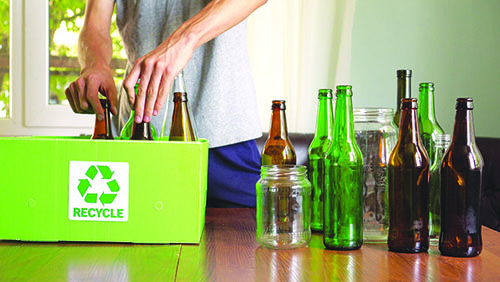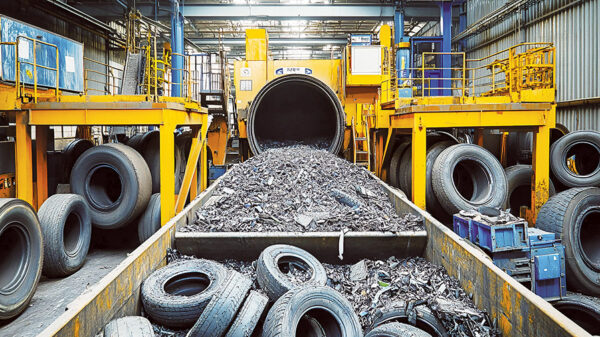Contributed by BRUCE WILLIAMS
The scrap industry has produced significant new tools to increase throughput and productivity of the modern recycling yards.
We now have the ability to reduce entire vehicles to shredded materials that have been sorted and categorized for reuse. Many of these new tools require cooling to keep them from failing prematurely. For example, a new shredder requires significant cooling to protect the sophisticated controls from overheating, the hydraulics from overheating by keeping the oil at an acceptable temperature, the motor from overheating, the windings and bearing from failing too soon and finally even the compressors that can help sort the chaff from the end product. Many times the cooling systems are overlooked or minimalized in the purchase process of these valuable new assets.
The manufacturer of each new shredder has specified the heat load and the temperatures required to adequately cool the shredder, but how will you make that happen? What type of cooling system is right for your location? What is the least expensive system based on operating costs and maintenance for your cooling system? The following can help you with the basic types of cooling systems to enable a better understanding of how they operate.
There are six basic types of liquid cooling systems:
- A liquid to liquid cooling system (PCX).
- A closed loop dry system (CD).
- A closed loop dry system with trim cooling (CDT).
- A open loop system (OE).
- A closed loop evaporative system (CE).
- A chilled water system (CW).
The simplest of these systems is a liquid to liquid cooling system (PCX). In this type of system your plant has an abundance of some type of cooling liquid already available but you do not want to provide this coolant to the shredder. It uses an intermediate heat exchanger and a coolant such as glycol and water on the other side of the intermediate heat exchanger in a closed loop to cool the shredder. The heat is exchanged through the intermediate heat exchanger without fouling the load heat exchangers. The strength of the PCX system is that it is relatively inexpensive to purchase and install. The components can be installed inside or outside. The PCX system is inexpensive to operate with only the closed loop pump using any additional energy. Maintenance is relatively simple on a PCX system demanding only a periodic inspection, lubrication, and cleaning of the heat exchanger as necessary.
A closed loop dry system (CD) is very much like the radiator in your car. The CD system uses an air cooled fluid cooler to transfer the heat from the closed loop coolant fluid pumped through rows of finned tubes that have ambient air blown/drawn across them. The basic components to a CD system are the fluid cooler, which contains the air to liquid heat exchanger with the fan/s, the pump and control skid, the coolant, and the field installed system piping.
A closed loop dry system with a trim cooler (CDT) is the same as the CD, but adds a supplemental fluid cooler. This system is typically used in a location that has too high of a dry bulb in the summer to provide the proper coolant temperature to the load. With an added liquid-to-liquid trim cooler the customer can use a water source to trim the temperature to the desired set point. Many times CDT systems are used to reduce the reliance on city water as a coolant.
The next system, an open loop evaporative cooling system (OE) is completely different than the first three listed above. This system has the ability to use the design wet bulb as the basis for the outlet temperature of the cooling water. For example if the design dry bulb for the location is 95°F and the design wet bulb is 75°F the OE system can provide approximately 82°F water to the load. The OE system cascades water through the honeycomb PVC fill material in the tower along with ambient air blown or drawn through the fill to evaporate the water. During the evaporation the remaining water is cooled to as close as 7°F or higher above the wet bulb temperature. The evaporated water is replaced with some type of make-up water system like a float valve. The remaining water and the make-up water are collected in a basin and then pumped to the load and the cycle repeats.
A closed loop evaporative system (CE) is somewhat of a hybrid between a CD and an OE system. The closed loop evaporative system is an open tower with a closed loop heat exchanger built into the tower. The tower water stays outside in the tower and does not circulate through the coolant piping. The coolant piping is a closed loop, with a glycol/water solution flowing from the CE tower to the load and back. The separate tower water is pumped from the basin to the top of the tower and sprays across the heat exchanger (normally an array of tubes) with air blown or drawn through the tower across the heat exchanger where evaporation of the water transfers the heat from the closed coolant loop to the ambient air. The remaining tower water falls to the basin where it is again pumped up to the top of the tower and repeats the process. The CE system tower water requires make-up water, chemical treatment, a drain, a cold weather basin heater and blow-down just like the OE system discussed above.
The last type of cooling system is the chilled water system (CW). A chiller normally has a mechanical compression device that converts energy into compressed refrigerant by using some type of compressor. The compressed refrigerant is piped to a condenser that rejects the heat from the refrigerant to the atmosphere or some type of liquid coolant. The compressed refrigerant changes state from a gas to a liquid in the condenser and is piped to an evaporator where it is metered or expanded in the evaporator. The expansion of the high pressure liquid refrigeration reduces the temperature of the evaporator. The liquid to be cooled is pumped through the evaporator heat exchanger and heat is transferred to the refrigerant. The low pressure vapor is carried back to the compressor and the cycle begins again for the refrigerant. The coolant flows from the evaporator heat exchanger to the load where the heat is transferred to the coolant in the load heat exchanger and then returns back to the evaporator to repeat the cycle.
There are many types of cooling systems available to satisfy your requirements. It is best to involve your cooling system specialist early in your planning to help you choose the best system to fit your needs.
Published in the March 2014 Edition of American Recycler News






